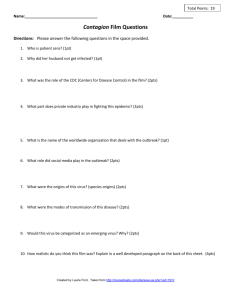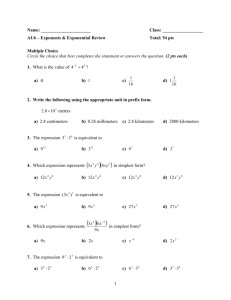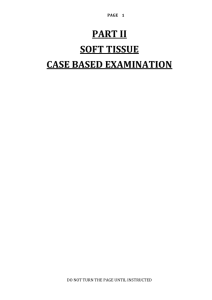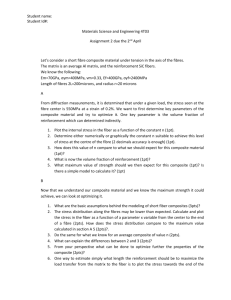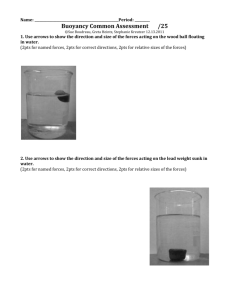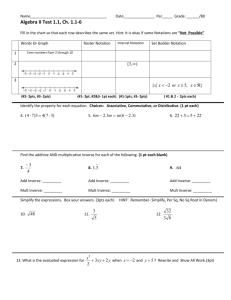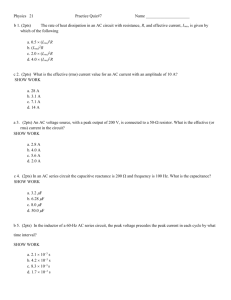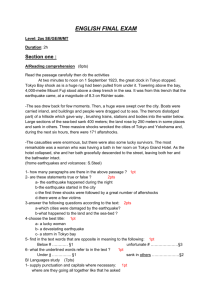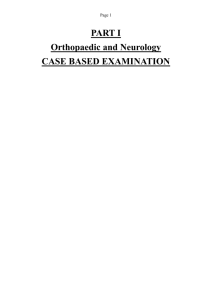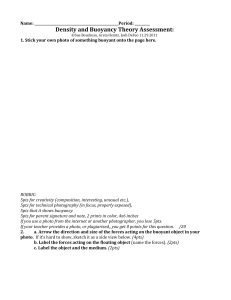word - ECVS
advertisement
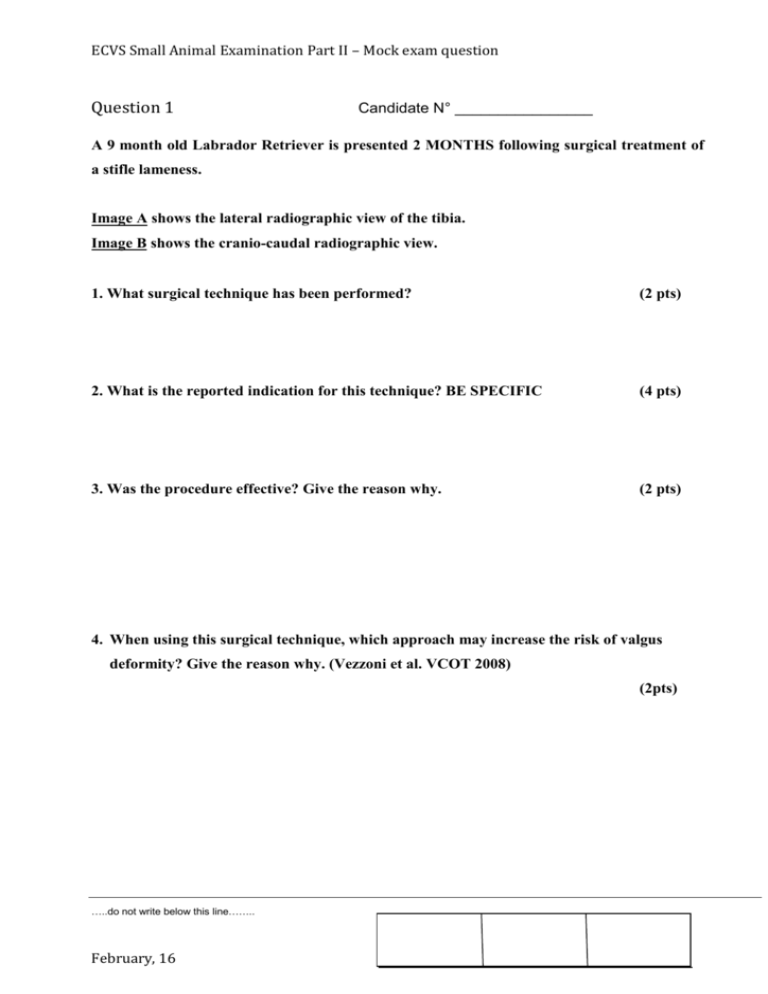
ECVS Small Animal Examination Part II – Mock exam question Question 1 Candidate N° ________________ A 9 month old Labrador Retriever is presented 2 MONTHS following surgical treatment of a stifle lameness. Image A shows the lateral radiographic view of the tibia. Image B shows the cranio-caudal radiographic view. 1. What surgical technique has been performed? (2 pts) 2. What is the reported indication for this technique? BE SPECIFIC (4 pts) 3. Was the procedure effective? Give the reason why. (2 pts) 4. When using this surgical technique, which approach may increase the risk of valgus deformity? Give the reason why. (Vezzoni et al. VCOT 2008) (2pts) …..do not write below this line…….. February, 16 ECVS Small Animal Examination Part II – Mock exam question Question 2 Candidate N° ________________ A 2-MONTH-OLD mixed breed dog is presented with left fore limb lameness. The owner reported a gradual worsening of the deformity during the past 3 weeks. Image A shows the cranio-caudal view of the antebrachium. Image B shows the lateral view of the antebrachium. 1. What is your most likely diagnosis? (2pts) 2. Describe the radiographic abnormalities typically associated with this condition. (2 pts) 3. What is the recommended initial treatment for such a case? (2pts) 4. What further treatment could be considered? (1pt) 5. What is the prognosis given the right treatment is performed? Circle one. (1 pt) Good Fair Poor 6. What structure is described as being under excessive tension in this condition? …..do not write below this line…….. February, 16 (2 pts) ECVS Small Animal Examination Part II – Mock exam question Question 3 Candidate N° ________________ Image A is a midsagittal T1-weighted MRI image of the brain and cervical spinal cord of a 2-year-old cavalier King Charles spaniel that presented with a 3-month history of cervical pain and scratching at the right shoulder area. Image B is a diagram of a surgical procedure used to treat this type of condition. 1. What is the name of this disease? (2pts) 2. What abnormality is indicated by the white arrow in image A? BE SPECIFIC (2pts) 3. What condition is indicated by the asterisk (*)? (2pts) 4. Which bones undergo partial removal as treatment for this condition? (2pts) 5. List FOUR different methods/drugs that can decrease intra-cranial pressure or cerebrospinal fluid production? …..do not write below this line…….. February, 16 (2 pts) ECVS Small Animal Examination Part II – Mock exam question Question 4 Candidate N° ________________ A 12 year old cat was presented with increased appetite, weight loss and muscle wasting. Physical examination revealed a thyroid mass and cardiac murmur. Pre-operative biochemistry results reveal mild elevation of creatinine. The image shows a sample of the ECG performed. 1. List TWO features of the ECG that are typical of cats suffering from hyperthyroidism. 2pt 2. Briefly explain how hyperthyroidism influences kidney function and prognosis. 3 pts 3. What combination of diagnostic blood tests has been recommended to investigate hyperthyroidism in cats with mild chronic kidney disease? (Wakeling 2008 J Sm Anim Prac) 1pt 4. What is the reported highest risk factor for development of hyperthyroidism in cats? 1 pt 5. What diagnostic test is recommended for evaluating metastatic or ectopic thyroid tissue? 1pt 6. What percentage of cats have bilateral hyperthyroid disease? Circle the correct answer. 1pt 25% 47% 58% 70% 7. If both external parathyroid glands are accidently removed during bilateral thyroidectomy, what intra-operative procedure may avoid permanent hypoparathyroidism? …..do not write below this line…….. February, 16 1pt ECVS Small Animal Examination Part II – Mock exam question Question 5 Candidate N° ________________ A 7 year old Shetland sheepdog was presented with a 6 week history of left sided purulent nasal discharge and intermittent epistaxis. Image A shows the nasal planum. Image B shows a rhinoscopic view of the left nasal chamber. 1. List FOUR typical findings of nasal aspergillosis that are demonstrated on image A and B. 2pts 2. Samples were collected from the left nasal chamber for fungal culture. What TWO factors are important in obtaining reliable fungal culture results? 2pts 3. What is the most important advantage of assessing the nasal chambers with CT or MRI with regards to treatment choice? 2pts The patient was treated with an infusion of clotrimazole solution followed by application of clotrimazole cream into the frontal sinus lateral compartment. 4. What TWO limitations in drug distribution were revealed by evaluation of this technique in cadaver specimens? 1pt 5. What is the most reliable method of assessing response to treatment? 1pt 6. List TWO methods of aggressive treatment that have been reported for dogs with repeated failure of minimally-invasive antifungal treatment. 2pts …..do not write below this line…….. February, 16
